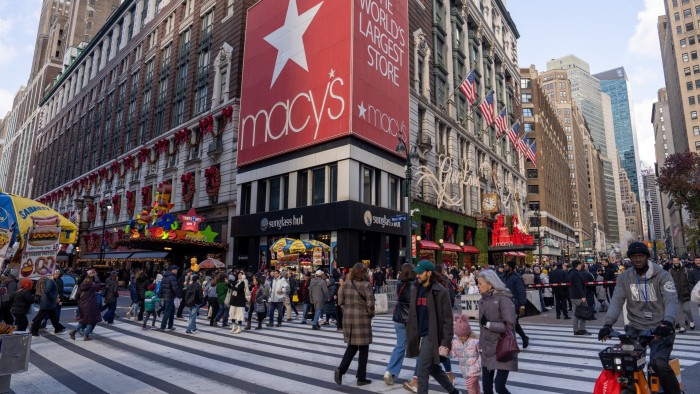Unlock the Editor’s Digest for free
Roula Khalaf, Editor of the FT, selects her favourite stories in this weekly newsletter.
Donald Trump’s “liberation day” tariff blitz has sparked the biggest sell-off in the US junk bond market since 2020, signalling growing angst among investors that an economic slowdown will hit corporate America.
The premium investors demand to hold speculative-rated corporate debt compared to that offered by US government bonds — a proxy for default risk — has shot up by 1 percentage point to 4.45 percentage points since Wednesday, ICE BofA data shows. That is the biggest rise since coronavirus triggered widespread lockdowns in 2020.
The sell-off in corporate bonds since Wednesday, when Trump took US tariffs to their highest level in over a century, highlights investors’ worries that the move will hit economic output and raise unemployment, leaving weaker companies struggling to repay their debts, analysts said.
“Credit is obviously a canary in the coal mine,” said Brian Levitt, global market strategist at Invesco. “Credit tends to go first . . . if the economy’s going to roll over, the odds of a recession pick up and then you’re going to see spreads blow out.”
On Friday, JPMorgan slashed its US economic forecasts, predicting a contraction of 0.3 per cent in 2025 — down from an earlier growth estimate of 1.3 per cent. It also said the jobless rate would rise to 5.3 per cent, from 4.2 per cent in March.
Companies in the household goods, retail and automobile parts sectors are among those hardest hit by the rout in lower-rated debt.

The pain was most acute in the weakest pockets of the high-yield market; the average spread on debt rated triple-C and below topped 10 percentage points for the first time in roughly eight months.
“The junkiest of the junk stuff [is] underperforming,” said Eric Winograd, chief economist at AllianceBernstein.
Lower-rated companies “have weaker credit fundamentals”, said Torsten Slok, chief economist at Apollo — they are likely to book weaker earnings and find it harder to cover their debt servicing costs.
“They simply don’t have the buffer for the shock that is coming,” Slok said. “If the economy is slowing down, [they] will of course be more vulnerable.”
Retailers and carmakers with overseas supply chains were among the sectors facing the most pressure, said analysts, who also highlighted energy companies.
Brent Olson and Tim Winstone, portfolio managers at Janus Henderson, pointed to a high-yield bond issued last month by online retailer Wayfair, which relies heavily on China and Vietnam for product supply. The yield of the bond, which matures in 2030, has jumped from roughly 8 per cent to about 10 per cent in recent days. Wayfair declined to comment.
Another investor highlighted arts and crafts store Michael’s and office supplies company Staples. Low-rated debt issued by both names has come under pressure since Wednesday. JPMorgan analysts noted that an estimated 60 per cent of Michael’s goods originated from China or other countries in south-east Asia which are now facing hefty tariffs.
A portfolio manager described a 2029 Saks bond as a “big, liquid, stressed bond” and a “good proxy” for pain points in the market. The department store group’s bond yield moved from less than 17 per cent to more than 19 per cent between Wednesday and Friday.
“We got more than a worst-case scenario” from the White House this week, said John McClain, credit portfolio manager at Brandywine Global Investment Management. “You have uncertainty and you have escalation and that is continuing to lead to a wholesale repricing of risk.”




